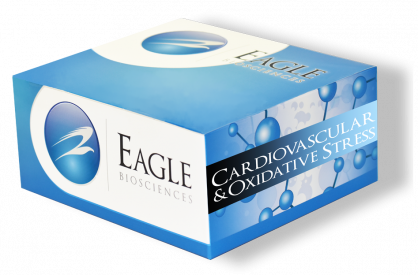TBARS Fluorometric Assay Kit
The TBARS Fluorometric Assay Kit is For Research Use Only
Size: 1×96 wells
Sensitivity: 0.5 µM
Standard Range: 0.5 – 20 µM
Incubation Time: 30 minutes
Sample Type: Serum, Plasma, Urine
Sample Size: 100 µl
Assay Background
2-ThioBarbituric Acid Reactive Substances (TBARS) are naturally present in biological specimens and include lipid hydroperoxides and aldehydes which increase in concentration as a response to oxidative stress.1,2 TBARS assay values are usually reported in malonaldehyde (malondialdehyde, MDA) equivalents, a compound that results from the decomposition of polyunsaturated fatty acid lipid peroxides. The TBARS assay is a well-recognized, established method for quantifying these lipid peroxides, although it has been criticized for its reactivity towards other compounds other than MDA.3 This kit offers the researcher a straightforward, reproducible and consistent method for analyzing urine for lipid peroxidation products.
SAMPLE PREPARATION
When working with plasma, the sample should be deproteinated with an acid. Centrifuge and use the supernatant to perform the assay. This solution may appear cloudy after the reaction, and can be clarified by passing through a 0.2 µ syringe filter. When working with urine, colored compounds contribute to the signal measured at 532 nm. This interference can be removed by running a sample blank with each sample.
Urine:
1. Urine samples can be used directly and should be assayed immediately. If the assay is to be performed on a different day, the sample should be stored at -70°C.
Plasma and Serum:
1. Collect blood samples and process immediately per the collection tube instructions
2. Prepare a saturated solution of ammonium sulfate.
3. Add 100 µl of saturated ammonium sulfate to 0.5 mL of serum or plasma in a test tube or microcentrifuge tube.
4. Add 35 mg TCA (trichloroacetic acid) to each sample and vortex. A cloudy precipitate should form.
5. Centrifuge the tubes and transfer the supernatant to a clean tube. Plasma and serum samples can be run without dilution. Samples are now ready for assay.
Related Products
TBARS Assay for Food and Beverages
TBARS ELISA Assay Kit
TBARS Cuvette Assay Kit


